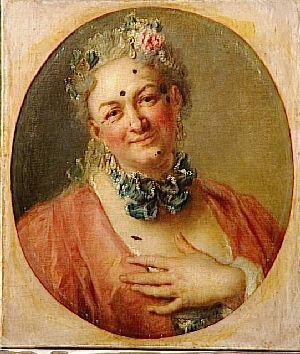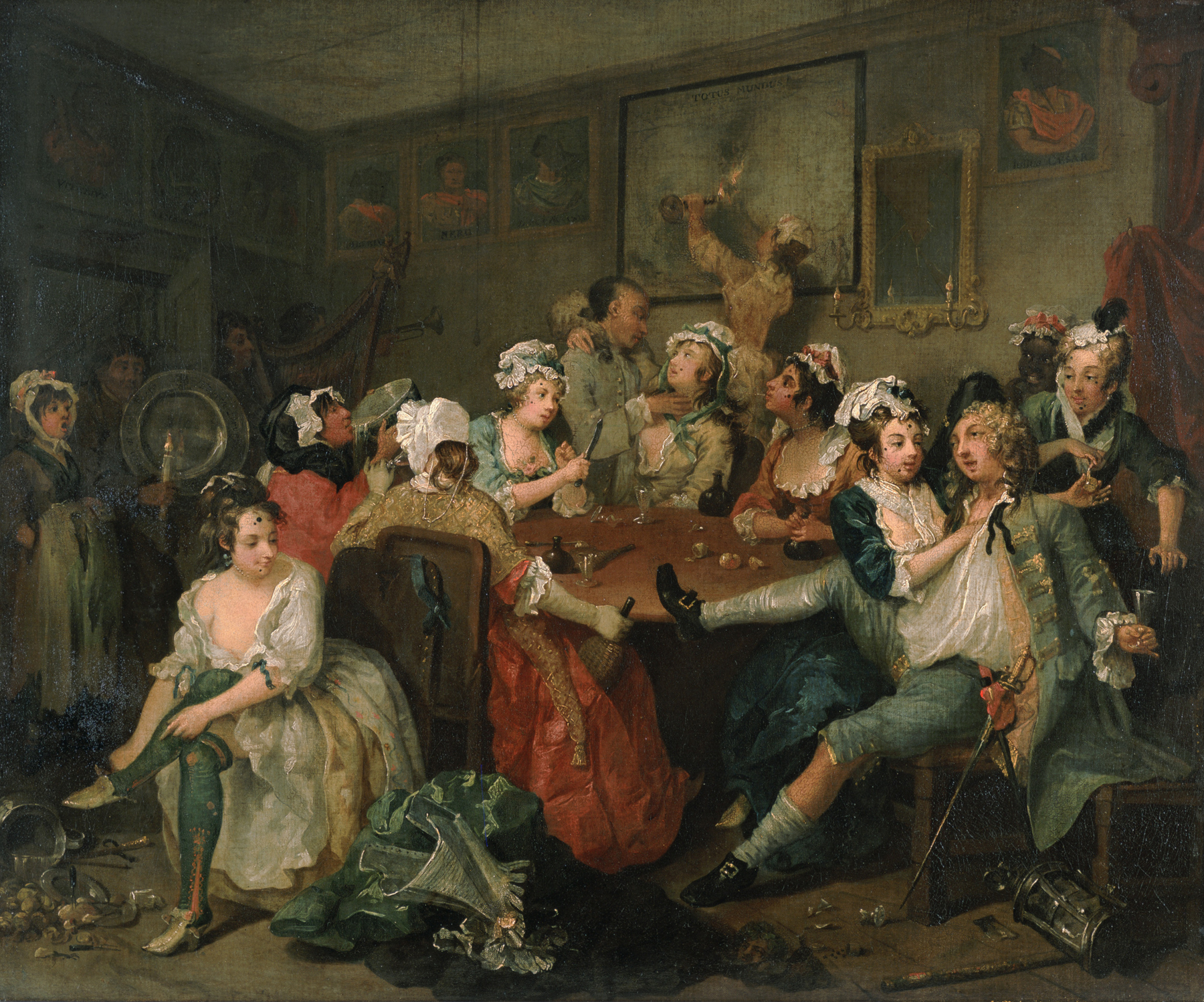|
Breeches Role
A breeches role (also pants role or trouser role, or Hosenrolle) is one in which an actress appears in male clothing. Breeches, tight-fitting knee-length pants, were the standard male garment at the time these roles were introduced. The theatrical term ''travesti'' covers both this sort of cross-dressing and also that of male actors dressing as female characters. Both are part of the long history of cross-dressing in music and opera and later in film and television. In opera, a breeches role refers to any male character that is sung and acted by a female singer. Most often the character is an adolescent or a very young man, sung by a mezzo-soprano or contralto. Budden J., "Breeches part" in: ''The New Grove Dictionary of Opera''. Macmillan, London and New York, 1997. The operatic concept assumes that the character is male, and the audience accepts him as such, even knowing that the actor is not. Cross-dressing female characters (e.g., Leonore in ''Fidelio'' or Gilda in Act III ... [...More Info...] [...Related Items...] OR: [Wikipedia] [Google] [Baidu] |
Haute-contre
The haute-contre (plural hautes-contre) was the primary French operatic tenor voice, predominant in French Baroque and Classical opera, from the middle of the seventeenth century until the latter part of the eighteenth century. History This voice was predominantly used in male solo roles, typically heroic and amatory ones, but also in comic parts, even ''en travesti'' (see apropos the portrait reproduced below and representing Pierre Jélyotte made up for the female title role of Rameau's ''Platée''). Lully wrote 8 out of 14 leading male roles for the voice; Charpentier, who was an haute-contre himself, composed extensively for the voice-part, as did Rameau and, later, Gluck. The leading ''hautes-contre'' of the ''Académie Royale de Musique'' that created the main roles of Lully's operas, at the end of the seventeenth century, were Bernard Clédière (who started off as a ''taille'', a lower Tenor voice type) and Louis Gaulard Dumesny. Notable ''hautes-contre'' of the eighteent ... [...More Info...] [...Related Items...] OR: [Wikipedia] [Google] [Baidu] |
Pantomime
Pantomime (; informally panto) is a type of musical comedy stage production designed for family entertainment. It was developed in England and is performed throughout the United Kingdom, Ireland and (to a lesser extent) in other English-speaking countries, especially during the Christmas and New Year season. Modern pantomime includes songs, gags, slapstick comedy and dancing. It employs gender-crossing actors and combines topical humour with a story more or less based on a well-known fairy tale, fable or folk tale.Reid-Walsh, Jacqueline. "Pantomime", ''The Oxford Encyclopedia of Children's Literature'', Jack Zipes (ed.), Oxford University Press (2006), Pantomime is a participatory form of theatre, in which the audience is encouraged and expected to sing along with certain parts of the music and shout out phrases to the performers. Pantomime has a long theatrical history in Western culture dating back to the era of classical theatre. It developed partly from the 16th century c ... [...More Info...] [...Related Items...] OR: [Wikipedia] [Google] [Baidu] |
Principal Boy
In pantomime, a principal boy role is the young male protagonist of the play, traditionally played by a young actress in boy's clothes. The earliest example is Miss Ellington who in 1852 appeared in ''The Good Woman in the Wood'' by James Planché to the consternation of a reviewer. She was followed by other music hall and burlesque entertainers, such as Harriet Vernon described as "a magnificent creature, who was willing to show her ample figure as generously as the conventional tights and trunks of the day allowed" and thus setting the standard of good legs on display and nominally male costume which emphasized her figure. The tradition grew out of laws restricting the use of child actors in London theatre, and the responsibility carried by such lead roles. A Breeches role was also a rare opportunity for an early 20th-century actress to wear a costume revealing the legs covered only in tights, potentially increasing the size of the audience. The practice of having a female pl ... [...More Info...] [...Related Items...] OR: [Wikipedia] [Google] [Baidu] |
Victorian Burlesque
Victorian burlesque, sometimes known as travesty or extravaganza, is a genre of theatrical entertainment that was popular in Victorian era, Victorian England and in the New York theatre of the mid-19th century. It is a form of parody music, parody in which a well-known opera or piece of classical theatre or ballet is adapted into a broad comic play, usually a musical play, usually risqué in style, mocking the theatrical and musical conventions and styles of the original work, and often quoting or pastiche, pastiching text or music from the original work. Victorian burlesque is one of several forms of burlesque. Like ballad opera, burlesques featured musical scores drawing on a wide range of music, from popular contemporary songs to operatic arias, although later burlesques, from the 1880s, sometimes featured original scores. Dance played an important part, and great attention was paid to the staging, costumes and other spectacular elements of stagecraft, as many of the pieces we ... [...More Info...] [...Related Items...] OR: [Wikipedia] [Google] [Baidu] |
Susanna Verbruggen
Susanna Verbruggen (née Percival) (c. 1667–1703), aka Susanna Mountfort, was an England, English actress working in London. Life She was the daughter of Thomas Percival (actor), Thomas Percival, a member of the Duke's Company for more than a decade. Her first recorded stage appearance may have been as early as 1681 in Thomas D'Urfey, D'Urfey's ''Sir Barnaby Whigg''. In 1686 she married the actor William Mountfort, and after Mountfort's infamous murder in 1692, she married the actor John Verbruggen. She was a successful and popular comedian, known especially for her breeches roles. Her greatest success was as the main character Lucia in Thomas Southerne's ''Sir Anthony Love'', where Lucia partakes of the freedom of the roistering English Restoration, Restoration Rake (character), rake by disguising herself as "Sir Anthony". Both men and women in the audience loved her performance in these types of roles. She was one of the leading actresses at the United Company, but when the ... [...More Info...] [...Related Items...] OR: [Wikipedia] [Google] [Baidu] |
Sir Anthony Love
''Sir Anthony Love; Or, The Rambling Lady'' is a 1690 comedy play by the Irish writer Thomas Southerne. It was originally staged by the United Company at the Theatre Royal, Drury Lane with a cast that included Susanna Mountfort in a breeches role as Sir Anthony Love, William Mountfort as Valentine, Joseph Williams as Ilford, William Bowen as Sir Gentle Golding, Anthony Leigh as An Abbe, John Hodgson as Count Canaile, Samuel Sandford as Count Verole, George Bright as Waitwell, Colley Cibber as Servant to Sir Gentle, Charlotte Butler as Floriante, Anne Bracegirdle as Charlote and Frances Maria Knight Frances is a French and English given name of Latin origin. In Latin the meaning of the name Frances is 'from France' or 'free one.' The male version of the name in English is Francis. The original Franciscus, meaning "Frenchman", comes from the ... as Volante.Van Lennep p.388 The play's incidental music was composed by Henry Purcell. References Bibliography * Van Lenn ... [...More Info...] [...Related Items...] OR: [Wikipedia] [Google] [Baidu] |
Thomas Southerne
Thomas Southerne (12 February 166026 May 1746) was an Irish dramatist. Biography Thomas Southerne, born on 12 February 1660, in Oxmantown, near Dublin, was an Irish dramatist. He was the son of Francis Southerne (a Dublin brewer) and Margaret Southerne. He attended Trinity College, Dublin, in 1676 for two years. In 1680, he began attending Middle Temple, London, to study law but was drawn away by his interest for theater. By 1682 he was greatly influenced by John Dryden and produced his first play, ''The Loyal Brother'', which was performed at the Theatre Royal, Drury Lane by the King's Company. Southerne bought his prologue and epilogue from Dryden, who made extra income from his ability to turn such pieces. Despite his friendship with the new playwright, Dryden raised his prices for Southerne".(Kaufman) In 1684, Southerne produced his second play,''The Disappointment (play), The Disappointment'', or, ''The Mother in Fashion'' (Kaufman). However, in 1685 Southerne enlisted a ... [...More Info...] [...Related Items...] OR: [Wikipedia] [Google] [Baidu] |
Rake (character)
In a historical context, a rake (short for rakehell, analogous to "hellraiser") was a man who was habituated to immoral conduct, particularly womanizing. Often, a rake was also prodigal, wasting his (usually inherited) fortune on gambling, wine, women, and song, and incurring lavish debts in the process. Cad is a closely related term. Comparable terms are " libertine" and "debauchee". The Restoration rake was a carefree, witty, sexually irresistible aristocrat whose heyday was during the English Restoration period (1660–1688) at the court of King Charles II. They were typified by the "Merry Gang" of courtiers, who included as prominent members the John Wilmot; George Villiers; and Charles Sackville, who combined riotous living with intellectual pursuits and patronage of the arts. At this time the rake featured as a stock character in Restoration comedy. After the reign of Charles II, and especially after the Glorious Revolution of 1688, the cultural perception of the r ... [...More Info...] [...Related Items...] OR: [Wikipedia] [Google] [Baidu] |
Gender Roles
A gender role, also known as a sex role, is a social role encompassing a range of behaviors and attitudes that are generally considered acceptable, appropriate, or desirable for a person based on that person's sex. Gender roles are usually centered on conceptions of masculinity and femininity, although there are exceptions and variations. The specifics regarding these gendered expectations may vary among cultures, while other characteristics may be common throughout a range of cultures. In addition, gender roles (and perceived gender roles) vary based on a person's race or ethnicity. Gender roles influence a wide range of human behavior, often including the clothing a person chooses to wear, the profession a person pursues, the personal relationships a person enters, and how they behave within those relationships. Although gender roles have evolved and expanded, they traditionally keep women in the "private" sphere, and men in the "public" sphere. Various groups, most notab ... [...More Info...] [...Related Items...] OR: [Wikipedia] [Google] [Baidu] |
William Shakespeare
William Shakespeare ( 26 April 1564 – 23 April 1616) was an English playwright, poet and actor. He is widely regarded as the greatest writer in the English language and the world's pre-eminent dramatist. He is often called England's national poet and the " Bard of Avon" (or simply "the Bard"). His extant works, including collaborations, consist of some 39 plays, 154 sonnets, three long narrative poems, and a few other verses, some of uncertain authorship. His plays have been translated into every major living language and are performed more often than those of any other playwright. He remains arguably the most influential writer in the English language, and his works continue to be studied and reinterpreted. Shakespeare was born and raised in Stratford-upon-Avon, Warwickshire. At the age of 18, he married Anne Hathaway, with whom he had three children: Susanna, and twins Hamnet and Judith. Sometime between 1585 and 1592, he began a successful career in London as an ... [...More Info...] [...Related Items...] OR: [Wikipedia] [Google] [Baidu] |






